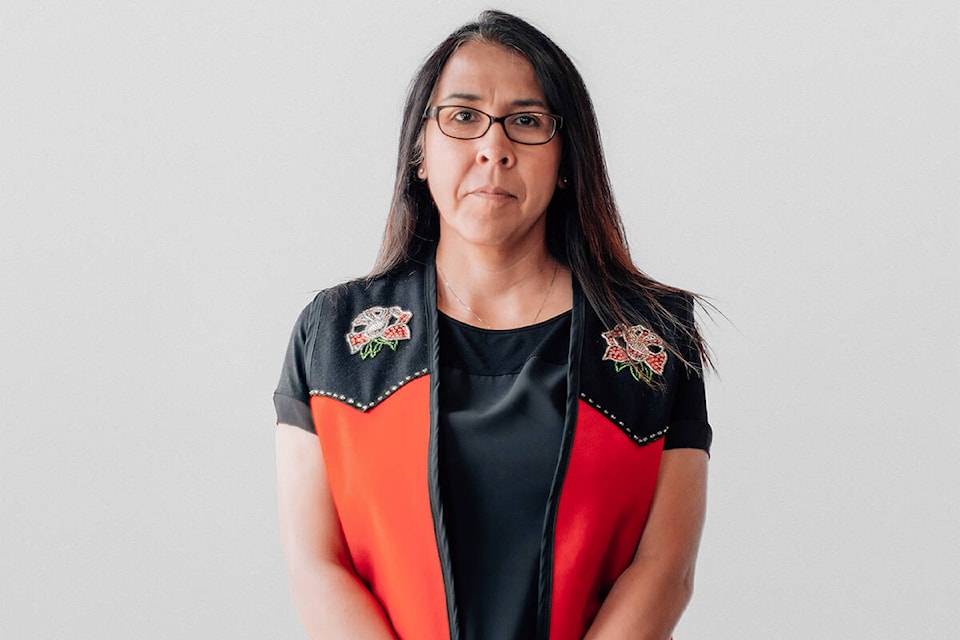“I swear, as soon as I cross the border into Tahltan territory, my heart beats differently,” says Nalaine Morin while describing her intimate connection to her picturesque homeland in northern B.C.
Morin is the lands director for Tahltan First Nation’s Central Government (TCG) and has been helping the Tahltan Nation manage its natural resources for over 15 years. Since 2020 she has been also been spearheading the Tahltan Stewardship Initiative (TSI) as its chair.
A significant part of her portfolio consists of managing the natural resources of the First Nation which occupies 11 per cent of B.C.’s territory – an area estimated to be larger than the size of Portugal.
Morin’s connection with metals, minerals and mines began at an early age. With her dad working in the mining industry she spent a considerable amount of her young life around mines in northern B.C.
That, combined with a love for sciences and math, set her to pursue a degree in metal and materials engineering from the University of British Columbia, followed by a diploma in Mechanical Engineering from BCIT.
Morin was always certain that her education and career choices would eventually lead her back to work for the advancement of her beloved homeland.
“I went into engineering to make change and even back then it was really about who I was as a Tahltan.”
She was further driven by the need for accountability and getting Indigenous jurisdictions under Indigenous stewardship.
Which is why the TSI is an important project for her, especially since it was minted to assert the First Nation’s right to self-determination when it comes to planning and managing water, wildlife and natural resources. It involves the Tahltan fulfilling their inherent stewardship responsibilities such as conserving wildlife and protecting the environment while managing sustainable economic development.
According to Morin, a stewardship initiative like this holds even more relevance today where climate change is an escalating threat.
“In the broader landscape, I think everybody is looking to First Nations to guide them in things like climate change,” she said, referring to the sustainable practices they advocate.
“When you look at the environmental legislation, both in the province of B.C. and Canada, now there’s a real recognition for Indigenous nations in these processes,” she says referring to the consent-based decision making models made effective through the United Nations Declarations on the Rights of Indigenous Peoples adopted by the province in 2019 (DRIPA).
In that sense, Morin says the responsibility for reconciliation does not only fall on Canadians but also on First Nations.
“And that’s one of the things that I really like about my job is that we are stepping up to the plate to do that work. And with a responsive and supportive Tahltan government, we’re succeeding.”
Morin says the work that they do under the broader umbrella of TSI is driven by some of the foundational governance pieces for Tahltan such as the Tahltan lands declaration of 1910 and the 1987 resource development policy, which very much speaks of “balance.”
“We have a responsibility as caretakers of the land. It’s about recognizing that and making the space for Indigenous governance meant to be able to do that work.”
Going forward, there’s much work to be done for TSI to reach its full potential. This includes developing internal capacity and governance structure, and inclusion of Tahltan knowledge in decision making on projects within the territory.
The fundamentals of stewardship laid out in the 1987 resource development policy are built on the guidance of past generations and knowledge from succeeding generations, Morin says.
The contributions of Tahltan youth towards TSI are commendable, she adds.
“I’m noticing that in the work that we’re doing, the youth bring in vibrancy and innovation,” she said, pointing towards their savvy use of cutting-edge technology and social media like TikTok and podcasts. But apart from this, Morin said she has also observed that the youngsters support Tahltan’s long-term vision for stewarding their land for future generations.
This consciousness furthers the Tahltan goal when it comes to environmentally conscious resource management.
Spearheading a team that includes a good mix of elders, middle-aged people and younger Tahltan is refreshing because that’s where “the magic really happens,” Morin said.
Earlier this year she was presented the 2021 Skookum Jim Award, which placed her contributions to the field of mining alongside those of global heavyweights.
Morin was instrumental in establishing the Tahltan heritage resource environmental assessment team in 2005. She also helped craft numerous joint agreements with global mining corporations which allowed for the Tahltan Central Government’s regulatory oversight over mining operations, including the Red Chris mine 80 kilometres south of Dease Lake.
As a member of B.C.’s Standing Code Review Committee, she encouraged the province of B.C. to revise its mining and regulations standards regarding tailings storage facilities following the 2014 Mount Polley tailings spill.
But despite all her accomplishments, Morin says she is still on a journey of learning.
“Everyday, I’m still learning. I’ve learned a tremendous amount from my nation and from the people that I’ve worked with on the TSI.”
That said, Morin wants to continue to build on the legacy and governance that Tahltan elders and leaders put in place for them.
“I truly believe in the vision of stewarding Tahltan lands for future generations.”
